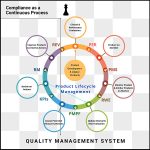About 2,500 years ago, Greek philosopher Heraclitus uttered a phrase that would stand the test of time: “Change is the only constant.”1
As any leader in the medical device industry—in any industry for that matter—can attest, Heroclitus’s axiom is as true today as it was then. Medtech companies are in states of near-constant transition. Consolidation through M&A activity, as well as geographic expansion and massive innovation investments, are roiling the industry, as is the transition toward outcome-driven healthcare and a shifting regulatory environment.
To be sure, this type of enormous change represents great opportunity for the industry. It shows in the forecast: The Medtech space is projected to grow to more than $500 billion worldwide by 2021.2
Transformation means growth, but not all device manufacturers will benefit. The spoils of this upheaval will go to the industry players that can manage these changes most effectively. The companies that can change successfully—and make those changes sustainable—will thrive.
Doing that is much easier said (or rather, written) than done.
Studies show that three out of every four transformation initiatives fail to deliver the expected value in terms of revenue growth or process efficiencies.3 The stakes are even higher in the Medtech space where regulatory bodies, as well as customers focused on patient safety, demand products that consistently meet stringent specifications and are manufactured under tight controls.
A misstep in quality or compliance, facilitated by poor change management, can mean hefty fines, legal issues, regulatory retaliation and reputational damage.
Managing changes effectively is crucial. The question becomes: How can manufacturers manage near-constant change successfully, particularly while they are getting leaner and driving down costs in all functions, enhancing process efficiency and eliminating the bureaucratic hindrances that can slow down responsiveness?
The answer begins with stakeholder engagement and communication.
One incontrovertible fact of change is that people—actual human beings—are necessary to make a change successful and sustainable. Stakeholders, including employees, customers, suppliers and others, must be aligned around the change and working toward a common goal. If that necessary ingredient is not in place, even the cleverest transformation initiative is doomed to fail, and the shrewdest CEO or executive team won’t be able to move the dial.
The good news is that stakeholder engagement and communication, while absolutely essential to any change initiative, does not necessarily require heavy investment in fancy new technologies or legions of staff.
Instead, a new model—characterized by practical techniques based in proven communication methods—can ensure that stakeholder engagement and communication continues, even as medical device manufacturers reduce costs and drive productivity changes throughout their operations.
Specifically, there are three practical communication methods that, when implemented consistently, can facilitate successful change initiatives, while driving cultures of quality and compliance, in highly regulated Medtech environments.
1) Eliminate communication complexity
Timeliness and clarity are the keys to effective, and practical, change communication. Regardless of the change’s size or scope, leaders and others must clearly communicate exactly how the change impacts various stakeholders and what they need to do to make the initiative successful.
In change communication—much like manufacturing, environmental, health, and safety (EHS), or quality—the more complexity that is interjected into a process, the more opportunities for failure. To ensure that clear change communication flows in a timely manner, drive out unnecessary complexity:
- Avoid opaque business speak: Jargon, including industry acronyms and financial terms, can take otherwise simple messages and make them convoluted and inaccessible.This can cause confusion (a potentially disastrous problem when dealing with issues of safety, compliance or quality), and it wastes time as employees and customers struggle to decipher the true meaning behind change messages.Keep language simple, err on the side of shorter words and sentences, and steer clear of initialisms, boardroom talk or financial jargon.
- Streamline bloated approval processes: Time is of the essence in change communication, and waiting for a message to be perfect before sharing it can waste precious moments when changes need to be ingrained in the organization. If running vital communications through the approval process is taking days rather than minutes, there’s a problem.To streamline approvals, sit down with interested parties—including key HR, communications and legal partners—and develop a process that works for everyone. Clearly identify which approvers need to see each type of communication (only in rare instances should everyone need to have a say), and solicit commitments for timely review.
- Choose content over design: When communicating a change—particularly a change that has compliance implications—the content and timeliness of messages is significantly more important that the aesthetics, or even the vehicle of delivery.Employees, customers or others need information quickly. They need to know what is happening and what is needed of them. And they need their questions answered to avoid confusion, anxiety or consternation.Spending hours or days designing a pleasant-looking newsletter or graphic is unnecessary and could set the change communication initiative back. Basic talking points delivered by a trusted individual (see next point), a simple e-mail with clear copy or even a traditional flyer is often enough to get the right information to the right people so they can take action quickly.
2) Leverage middle managers
While all stakeholders, both internal and external, are important in driving successful changes, galvanizing employees around a change initiative is the critical first step.
A practical way to get employees on board with a change is to use middle managers as the primary vehicles for communicating changes to internal audiences. Managers are already a part of the equation. They are drawing salaries and communicating regularly with employees, so the incremental cost associated with leveraging managers is minimal.
Plus, managers are better vehicles than more time-consuming and costly solutions such as e-mails, Intranets or video presentations, and middle managers are better mouthpieces than executives.
- Employees (usually) trust their direct supervisors: The most important relationship an employee has at work—the relationship that dictates engagement and performance—is with his or her direct manager.4Because employees have direct engagement with their managers, and there is often physical proximity, there tends to be a basis of trust in the dynamic. During times of change, when employees are often stressed and anxious, direct interaction with a trusted figure is more effective that communication from far-off executives or corporate messages from HR.
- Managers model change adoption: Effective managers lead by example, and when employees see their direct supervisors adopting a change (adhering to a new process, using a new system, etc.), it has a real impact of their behavior. This first-person modeling is also less expensive, and more effective, than demonstration videos and can reinforce written SOPs and visual plant elements.
- Managers review performance: Managers have the power of the performance review, which means that their words have more impact than memos or CEO videos ever could. Managers supervise day-to-day activities of their teams. They see what’s happening on the ground, and their opinions matter in a very tangible way. Namely, they impact promotions, raises and reviews.
To effectively leverage managers, provide them with the messages and materials they need to advocate on behalf of the change. While this may include talking points or FAQs, be clear that these materials are meant to support their communication with employees, not replace it. Make sure managers know the important roles they play in making changes successful, and consider change communication training programs to build the right capabilities among the managerial class.
3) Make the change meaningful
When a medical device manufacturer evolves, it’s happening for a reason. Acquisitions are made to gain access to a new product line, grow market share or expand geographically; quality process changes are made to correct an issue, adhere to a new regulation or improve to meet customer demands; and new products are launched to take advantage of unmet opportunities.
There is a rationale behind every change, and every change has an overarching positive impact on some stakeholder group (even plant closures, reduction in force and divestitures, which are tough pills to swallow in the short term but ultimately benefit the organization).
Yet, many leaders and change agents neglect to specifically communicate the rationale for changes. By taking the very practical step of articulating why a change is being made and how that change will ultimately bring about a brighter future, leaders can remove the guesswork from an initiative, drive the behaviors they need to make the change successful and mitigate the risk of vocal dissent.
To do it, simply take a few minutes to think through the change rationale before the communication process begins. Then, reiterate the rationale along every touch point with all stakeholders.
The cumulative impact of practical change communication
In the medical device space, changes do not happen in a discrete or linear fashion. Changes are occurring at all times, across multiple functions, geographies and facilities. The benefit of practical change communication extends beyond its simplicity and cost-effectiveness.
In fact, by applying consistent communication practices to each change (large and small), manufacturers can, over time, build an ecosystem where changes are accepted, adopted and welcomed by various stakeholders. This culture of change is vital in industries where engaged workforces are necessary for regulatory compliance, and loyal customers are integral to growth and innovation strategies.
Further, the aforementioned techniques, consistently applied to change initiatives, represent best practices that will drive day-to-day performance and goal attainment. An environment of consistent and practical communication, with active managers and simple language, is a critical element to ongoing engagement, even during times of relative stasis.
References
- George, L. K., & Ferraro, K. F. (2016). Handbook of aging and the social sciences. Amsterdam: Academic Press.
- EvaluateMedTech World Preview 2017, Outlook to 2022.
- Ewenstein, B., Smith, W. and Ashvin, S. (July 2015). Changing Change Management. McKinsey & Company. Retrieved from https://www.mckinsey.com/global-themes/leadership/changing-change-management.
- What Drives Employee Engagement and Why It Matters. (2012). Dale Carnegie Training White Paper. Retrieved from https://www.dalecarnegie.com/assets/1/7/driveengagement_101612_wp.pdf.







